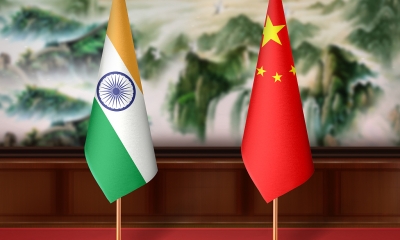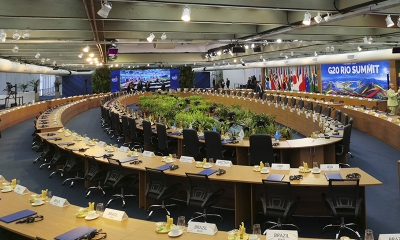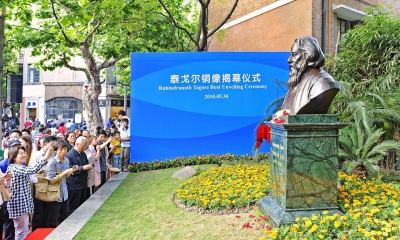Time for India-China Cooperation in Winning the Fight against COVID-19
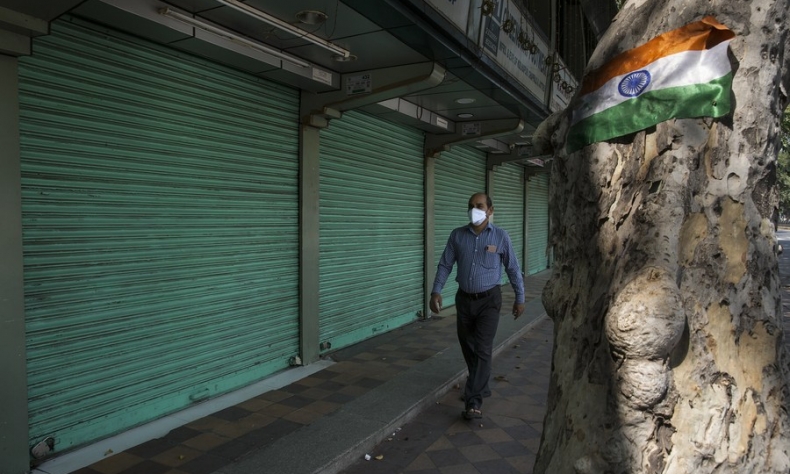
The ongoing COVID-19 is a stark reminder that all countries must rise above differences in geography, race, history, culture and social system.
The COVID-19 pandemic, the worst crucial global health calamity since World War II, has killed more than 850,000 people while affecting 25.5 million in more than 200 countries throughout the world. Despite the spending of trillions of dollars on curbing the deadly pandemic, the ravages of the contagion forced us to recall William Shakespeare: “As flies to wanton boys, are we to the Gods/ They kill us for their sport.”
Since the COVID-19 case was first reported in the Wuhan city, capital of Hubei province, in late December 2019, this highly contagious virus has devastated the globe posing enormous health, economic, social and environmental challenges to the entire human population. In the face of the common enemy that is COVID-19, it is expected that all countries, powerful or developed, rich or poor, should strengthen cooperation on curbing the epidemic and jointly overcome difficulty since the destinies of all countries are closely intertwined.
Courageous China’s success in defeating COVID-19: Lessons for the world and India
A nation’s strength is tested in difficult times. Faced with “the most challenging public health disaster in decades,” the Chinese government took the most comprehensive, rigorous and thorough prevention and control measures to defeat the deadly COVID-19 epidemic. The Chinese government and health workers worked literally 24×7 in order to win the “People’s War,” as President Xi said.
The Chinese government mobilized the whole nation to fight the virulent epidemic, and all Chinese people rallied together responding to President Xi Jinping’s call. On January 23, the Chinese administration locked down Wuhan, the country’s COVID-19 epicenter, and completely separated Hubei Province from the rest of the country to contain the virus. Since the deadly virus hadn’t spread exponentially from Wuhan and the surrounding Hubei Province to the rest of China, as part of resource pooling, the Chinese government had sent the necessary medical equipment such as ventilators, surgical masks, testing kits and other materials to Wuhan from all over the country. 16 public venues were converted to temporary hospitals. Two specialized hospitals, Huoshenshan and Leishenshan, were built in a record 20 days to admit patients. More than 340 medical teams of 42,000 medical workers across the country and half a million volunteers went to Hubei.
Moreover, all necessary items from food to medicine had been sent to all the Wuhan household during the 76-day lockdown. Ambulances were sent if anyone was ill in the buildings and community halls. People from all walks of life have been encouraged with sufficient funds and resources by the Chinese government. More importantly, all the treatment costs are borne by the Chinese Government, and the overall cure rate reaches 93.5 percent. And finally on April 8, the lockdown of Wuhan was lifted, a milestone in China’s war against the brutal virus. At present, China is speeding up the resumption of work and production. Chinese people’s life is returning to normal, and the society is full of vitality and hope.
All countries across the world including India need to look at China’s multi-level control and prevention mechanisms in containing the virus for protecting people’s lives.
China’s victory over the epidemic war is not a cock-and-bull story
Sad but true, the current COVID-19 pandemic has engulfed the world’s most powerful nation, the United States with the highest number of COVID-19 cases and fatalities. As on September 1, it has recorded over 6.21 million infections and more than 187,000 deaths so far – both the highest in the world. The breadth and magnitude of deaths in the country clearly indicates that the U.S. has miserably failed to protect its people, leaving them with illness and financial ruin.
On the other hand, the cumulative efforts of the Chinese leadership and people resulted in an early victory over the deadly infection, showing a new dawn breaking through darkness. The death toll in China stands at 4,730, including 89 fatalities from the Hong Kong Special Administrative Region (HKSAR) and 7 from the Taiwan region.
The low scale of death toll in comparison to China’s 1.4 billion people has established the fact that the Chinese government under President Xi left no stone unturned in the mission of winning “people’s war.” Undoubtedly, without the dedication and sacrifice of the Chinese people including medical workers, civil servants and volunteers, China could not have won the war against the epidemic in around two months.
China’s victory over the epidemic is not a cock-and-bull story. The World Health Organization (WHO) was right in praising that China’s strong measures not only controlled the spread of the epidemic in China, but also prevented it from spreading to other countries, “setting a new benchmark for countries around the world to fight against the epidemic”.
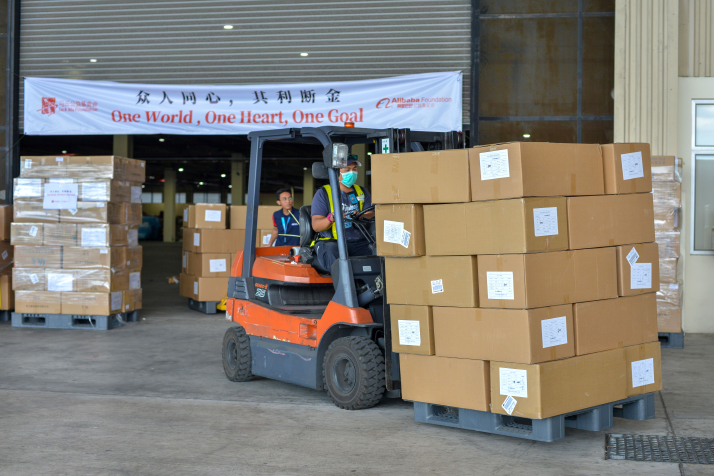
China’s assistance to the world to combat the COVID pandemic: a proof of global solidarity
It’s matter of great regret that while the cases of COVID-19 are galloping each day and death toll soars up in every part of the world, some countries including India also, led by U.S. President Donald Trump, are trying to scapegoat China, clamoring for decoupling, and exiting from international groupings and treaties. These moves are causing disruptions to international cooperation against COVID-19 and aim to provoke confrontation over ideology and social system, putting the world in jeopardy.
On the other hand, on March 26 at the G20 summit President Xi declared the two most powerful weapons against the disease – “solidarity and cooperation”, that the virus can only be defeated when the international community fights in unity. “It is imperative for the international community to strengthen confidence, act with unity and work together in a collective response,” he said.
As such, despite the anti-China campaign led by the United States, as a responsible country China has been providing necessary medical support and experience to hard hit countries from Asia to Europe, Africa to Latin America in fighting COVID-19 with a vision of “building a community with a shared future for mankind”.
While Trump had cut US financial support to the WHO, China donated an additional $30 million in cash to the global health body to support its global fight against the pandemic. According to China’s Foreign Ministry, China has donated medical supplies such as ventilators, face masks, protective suits and glasses, test kits, thermometers, hand sanitizers to 127 countries and four international organizations, 29 medical teams to 27 countries and held over 70 video conferences sharing experience and data with more than 150 countries and regions. Nothing China does is out of geopolitical calculation, or in pursuit of economic gains, or with any political strings attached.
Undoubtedly, China’s assistance to the world in fighting COVID-19 is proof of global solidarity. A few lines from a CNBC report published on April 3 deserve to be quoted here: “This is the first international crisis where China is actively taking a global leadership role and it stands in particular contrast to the US, which has disdained international cooperation and invested more political capital in criticizing China for its role in allowing the outbreak to spread.”
India’s attitude toward China on the COVID-19 outbreak
India’s attitude toward China has dramatically changed since the COVID-19 outbreak despite Prime Minister Narendra Modi writing a letter in February to President Xi, expressing his recognition of the tremendous effort made by the Chinese government to deal with the outbreak. When the Chinese government and people were making all-out efforts to battle the disease, India cut off travel to and from China. Exports of masks and other medical protective equipment, even the cotton yarn used to make masks, were prohibited by India. Indian airlines suspended flights to China. In April, India canceled an order for nearly 1 million rapid antibody testing kits from two Chinese companies, Guangzhou Wondfo Biotech and Zhuhai Livzon Diagnostics after Indian Council of Medical Research labelled Chinese test kits as “faulty”. Needless to say, India’s gesture runs against the spirit of “Love thy neighbor”.
Furthermore, echoing the words of President Trump and Secretary Mike Pompeo, Prime Minister Narendra Modi-led Indian government and his administration officials have been far more vocal in its criticism of China for the origin of the virus with advocating the use of the term “Wuhan virus.” But the fact is that the WHO has made it clear on many occasions that the COVID-19 originated from nature, not man-made. Scientists and medical experts from the US, Germany, Sweden, Japan and other countries clearly pointed out in a joint statement as published in the world leading medical journal, The Lancet, that there is no evidence of “lab making or leaking the virus” and “even the best lab in the world cannot produce such virus”.
China’s helping hand to India’s COVID-19 fight
On the contrary, like a true neighbour and friend, China has been extending support to India’s fight against the epidemic since the emergence of the first case on January 30. The Civil Aviation Administration of China (CAAC) has set up a “green channel” and approved 45 cargo flights from India to transport medical supplies. Chinese enterprises and charity organizations such as Alibaba Foundation, Fosun Group and SANY Group have sent donations to India, including ventilators and personal protective equipment. The Chinese local governments, such as Guangdong Province and Chongqing city, have respectively donated large quantities of medical supplies to their sister state and city, Gujarat and Chennai. Undoubtedly, all these activities of China had sent out a very good message for the India-China relationship.
India should engage in cooperation with China to confront COVID-19
Difficult situations reveal the true nature and depth of friendship. This epidemic, by default, offers new opportunities for deepening India-China cooperation in winning the fight against the epidemic. It’s really worrying for India that, despite the world’s strictest and longest lockdowns, the pathogen has penetrated in all parts of the country within seven months. India is now fast becoming the world’s newest coronavirus hotspot, setting a record for the world’s biggest single-day rise with 78,761 cases on 30 August. India has the third-highest number of cases with COVID after the United States and Brazil, and its 65,469 fatalities are the third-highest in the world as on September 1.
As such, in the face of COVID-19 virus, it is important for India and China, the two largest developing countries and emerging economies, to draw on each other’s experiences, share information, and conduct joint R&D of drugs while developing successful vaccines.
India should be a partner of China to energize its COVID-ravaged economy
The pandemic induced lockdown has exacerbated the recession in the Indian economy, adding to the burgeoning unemployment in the country. It should be noted here that the Indian economy has shrunk by 20 percent during the COVID crisis.
On the other hand, China’s economy, like a strong engine, grew by 3.2 percent in April-June quarter and this was driven by a recovery from COVID-19 and investments in infrastructure. As such, most Indian states will do better by partnering with an open and vigorous China through trade and investment in post-COVID period in order to transform their economic conditions.
But following the unfortunate Galwan Valley incident of June 15, some right-wing Indian organizations have expressed their patriotic emotional outbursts in order to completely exclude “Made in China” products. But if India wants to become the world’s next manufacturing hub, it must embrace Chinese investment as its trade and business is hardest hit by the virus.
Common front for a community with a shared future
Undoubtedly, the ongoing COVID-19 is a stark reminder that all countries must rise above differences in geography, race, history, culture and social system. President Xi has advocated building “a community with a shared future for mankind”. As the two most populous developing countries in the world, if India and China defeat this virus together with practical actions, it will be of great significance to safeguard the global public health and the ultimate victory over the epidemic. It is hoped that the two neighboring countries must work together for a community with a shared future and jointly preserve Planet Earth as Prime Minister Modi mentioned “World is One Family”.
 Facebook
Facebook
 Twitter
Twitter
 Linkedin
Linkedin
 Google +
Google +




